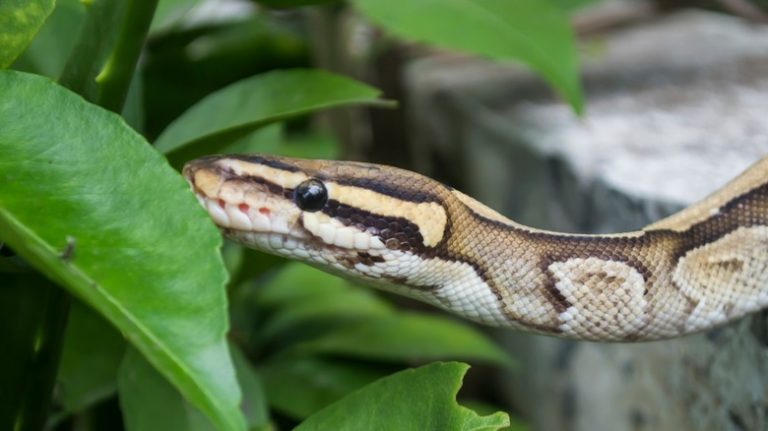Not many unwelcome guests strike as much terror as the slithering kind, whether venomous or an innocuous garden variety. Given their highly-elusive nature, snakes are pros at hide-and-seek, often venturing unnoticed when seeking refuge and sustenance on our properties. So, what are the telltale signs that you have a snake problem? Besides the signs that ring alarm bells, ranging from molted snakeskin to slither tracks and spine-chilling hissing sounds, there are also lesser-known hints like a failed flour test.
But what attracts snakes to your house or yard? Well, if your backyard holds snake magnets like dense vegetation, unchecked woodpiles, birdbaths, tire swings, or busy bird feeders, then there’s an increased chance of these legless guests infiltrating your territory. Moreover, during the hotter months, snakes prefer cooler and murkier spots, while during the colder months, they love warmer areas. When detecting and dealing with snakes in your yard, there’s hardly room for second-guessing. The keywords here should always be safety and swiftness, as there’s no charm in courting danger. While we love to play detective, a snake infestation is not a battle you should wage alone. The value of a professional’s assessment is, quite literally, the barrier between you and a probable venomous adversary.
Molted snakeskin
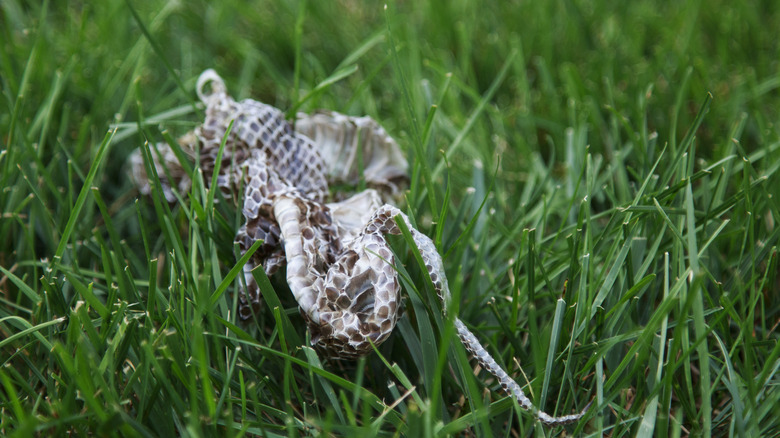
A sudden discovery of a snakeskin in your yard, basement, or crawl space might be your first shocking hint of a looming snake problem. More than merely an old garment, a snakeskin is glaring evidence of a potentially-large serpent outgrowing its skin and also doubles as a defense mechanism to rid the snake of pests. The shedding frequency varies and is primarily dependent on the snake’s age and procreation cycle, with young snakes casting off their old skin more often than adults. A trained eye can identifying what type of serpent you’re dealing with by deciphering the intricate patterns etched on the leathery, translucent remnants.
Unusual droppings
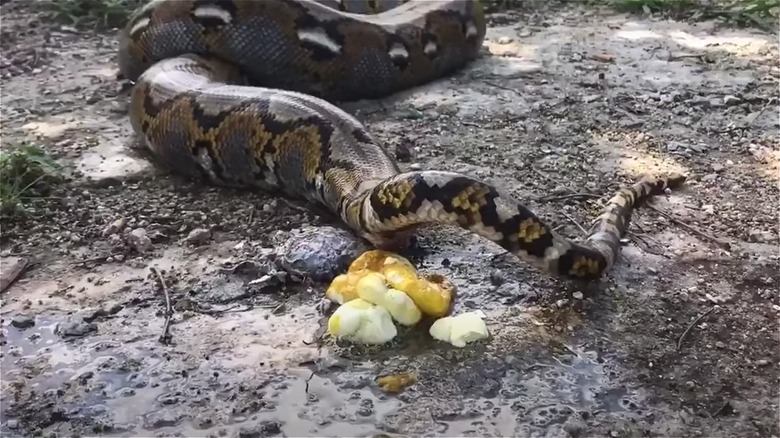
TscViral / YouTube
Your next clue could be lurking in unassuming bodily waste. Snake droppings echo their unique digestive process, leaving behind long, cylindrical evidence often cloaked in hues of black or brown, albeit with color deviations that are caused by their recent diet. So, don’t be startled if you stumble across fecal matter in tones of gray, green, white, yellow, red, or even orange. Larger droppings translate into larger snakes, thereby arming you with a gauge of your slithery adversary’s size. And did we mention that snake droppings might bear the prey’s remnants? Yes, and they could range from bone fragments to hair.
Hissing sounds
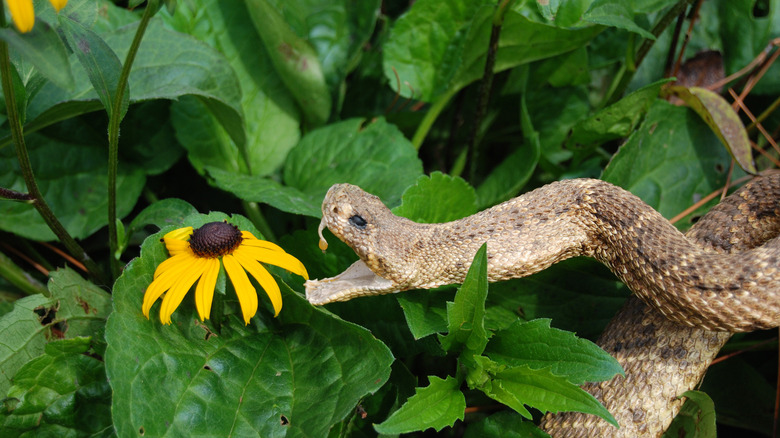
Maria Dryfhout/Shutterstock
Noticed eerie hissing noises emanating from hidden parts of your house? If so, you might be dealing with a serpentine tenant. A unique part of a snake’s anatomy dubbed the glottis has a piece of cartilage that vibrates in response to a forceful exhalation, leading to the characteristic hissing. The motives are multifold, encompassing emotions of fear or irritation or even physiological functions such as digestion or shedding. Interestingly, while humans and some creatures use sound to communicate, snakes lack this ability, remaining oblivious to each other’s hisses. For your safety, rather than going into a search frenzy that’s triggered by the hissing, involve a professional.
Slither trails
Marcel Forrer/Getty Images
Don’t hastily dismiss a dusty path or soft soil marred by irregular lines and furrows as a kid’s doodling — it could be another indicator of a snake’s presence in your home. The track’s appearance largely depends on the snake’s style of locomotion. You might see sideways tracks, indicative of sidewinding movement, or perhaps you spot accordion-like patterns, giveaways of the concertina motion where the snake extends and compresses its body segments like a spring or accordion. There are also the distinctive S-shaped patterns left behind by lateral undulation (the most common slither style) or the straight trails that scream rectilinear progression (a snake’s version of a crawl).
Peculiar holes in your yard
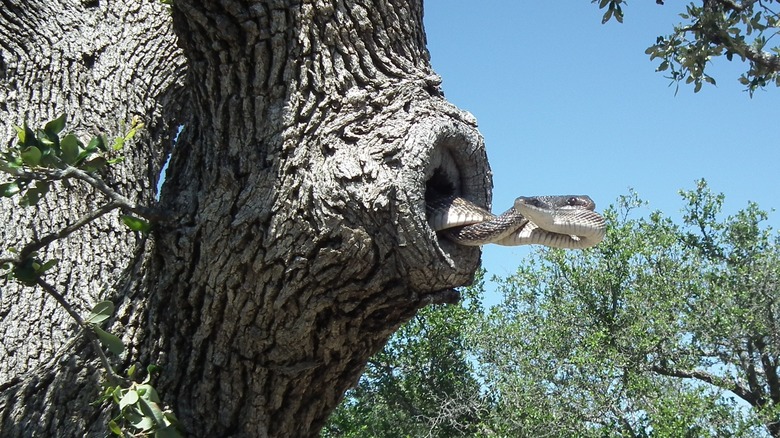
Robert Rhoads/Shutterstock
Another sign of a snake problem in your yard is holes that seem out of place. Upon closer inspection, snake holes are typically circular, with an almost perfect opening nestled among grass blades, tree trunks, or cracks in concrete surfaces. But not every circular pitfall implies the presence of a scaly, slithering inhabitant. Keep your eyes sharp for supplementary markers such as freshly-shed snakeskins, droppings, or the absence of spiderwebs or debris near the hole (indicative of recent activity). Backfilling snake holes with dirt, gravel, or sand can serve as an immediate solution, but for long-term management, consider employing burlap or netting to prevent reentry.
Off-putting smell

Andrey_Popov/Shutterstock
A pungent and bewildering smell could reveal a concealed snake in your home’s darkest or most confined spaces. By masking themselves in an unappetizing scent courtesy of the cloacal glands, the slithering guests can often escape danger unharmed. However, don’t pin down one odor for all species, as different snakes have distinct smells. For example, a non-venomous water snake could emit a pungent, musky scent, while the notoriously-venomous copperhead snake could grace your olfactory senses with the essence of cucumber — though not everyone experiences this. Many have said that, no matter what type of snake you’re dealing with, the odor is typically unpleasant.
Dramatic decline in rodent activity
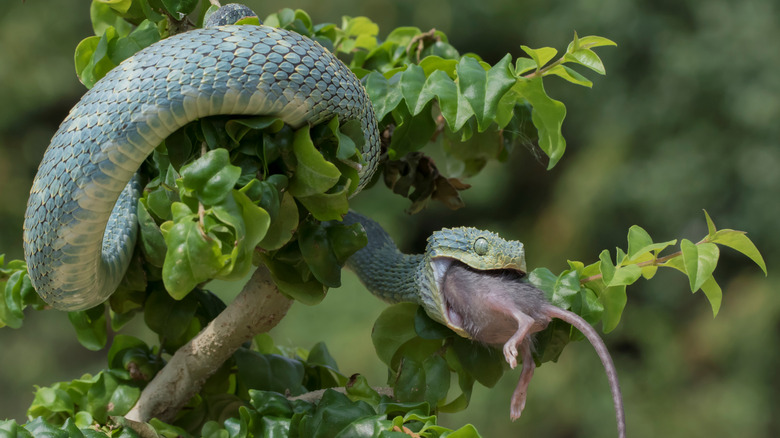
Mark_Kostich/Shutterstock
Noticed a sudden absence of rats and mice in areas they previously frequented? If so, this could indicate a lurking snake problem. Small animals like rats form a significant portion of a snakes’ diet, and the quiet takeover might even go unnoticed until the change in the rodent population becomes glaringly apparent. However, the relationship between snakes and rodents isn’t a one-way street. Your snake problem might inadvertently reveal an unchecked rodent infestation, enabling you to address both issues simultaneously.
Oblong, white-to-translucent, leathery eggs
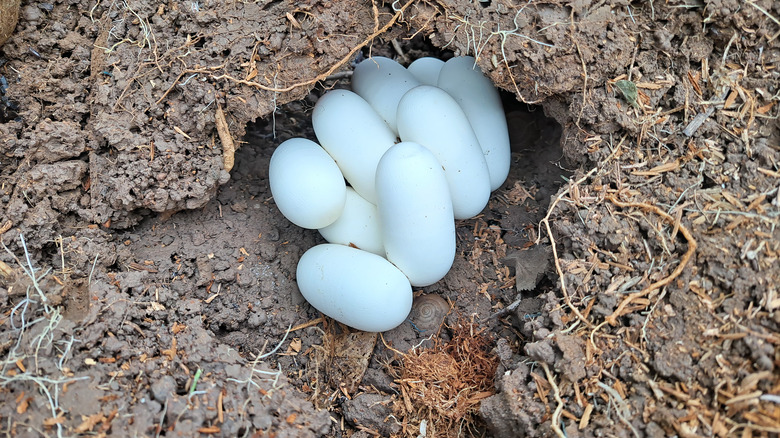
Suphat phalasoon/Shutterstock
Snake eggs are typically oblong, white or translucent, and somewhat leathery — not hard-shelled as bird eggs are. You’ll likely find these in summer or fall stashed in sneaky hideouts where a mother snake would find it safe to lay her brood (think beneath leaves, within rocky niches, or in unassuming holes). But remember, some (though not all) mother snakes are protective of their offspring and may be close by, ready to fiercely defend their clutch. Further, even seemingly-harmless newly-hatched snakelets can pack quite a venomous punch. Rather than risk your safety, it’s best to enlist the help of local snake experts or animal protection services.
The flour test
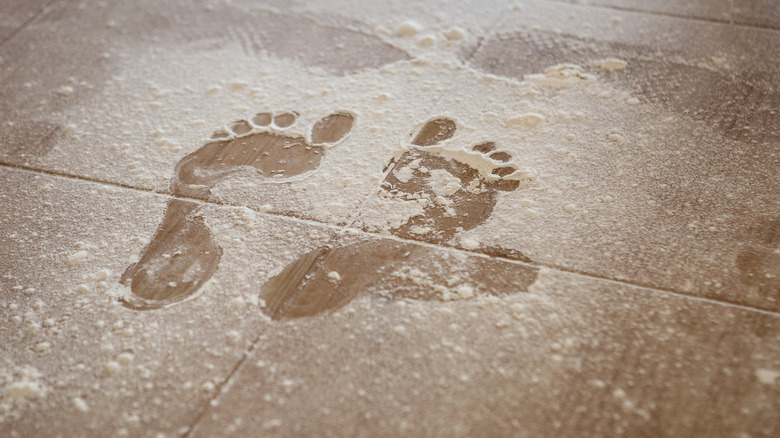
Franz12/Getty Images
Is the waiting game too slow for your racing heart? Salvation could be lying within the humble flour test. Suited for both indoors and outdoors, particularly in warmer areas where snakes (as cold-blooded creatures) are lured by warmth, this hack is as simple as sprinkling a thin layer of flour on your suspected site. Soon enough, you could spot trails on your flour dusting, an unambiguous sign of a resident snake. However, this shouldn’t prompt amateur snake hunting, as acting rashly could risk your safety and increase the likelihood of the snake penetrating deeper into your property out of fear. Instead, alert a snake expert.
Snake sightings
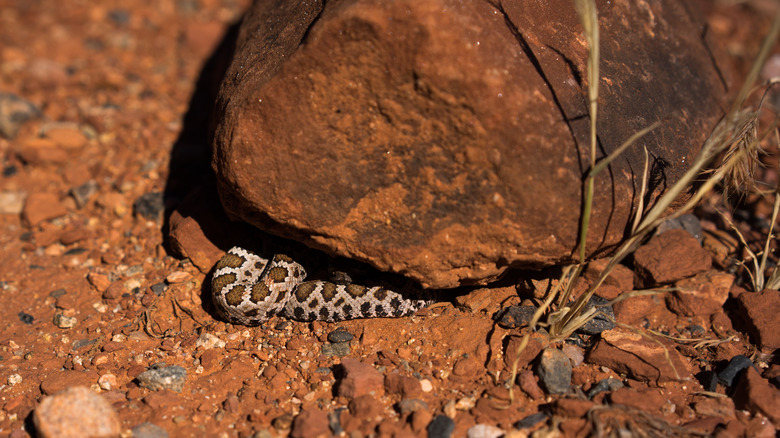
Cactussunstudio/Getty Images
The most blatant sign, of course, is visually spotting a snake on your property. They might show up in the oddest places: in the attic, in the basement, under the deck, or simply lazing on your backyard lawn. However, don’t just leap to the conclusion that you’re facing a full-scale snake invasion. After all, these solitary slithering creatures rarely fancy company, except when mating or hibernating. Their elusive and cold-blooded nature makes detection difficult, but frequent sightings should ring alarm bells for you to take the necessary precautions. And while a snake sighting might crank your excitement, always maintain a safe distance and call a professional.
Odd pet behavior

alexei_tm/Shutterstock
Pets (dogs and cats in particular) are incredibly attuned to their environments, all thanks to their acute senses of smell and hearing. For example, did you know cats have 200 million+ scent receptors in their nasal cavity? That’s over 40 times more than us humans. In the case of a snake intrusion, your pet might suddenly exhibit agitation, restlessness, or persistent barking directed at specific locations on your property, be it a shed or under-deck area. While several things including other wild pests could provoke such behavior, a recurring sequence of such heightened vigilance by your pet could hint at an unwelcome slithering presence.


